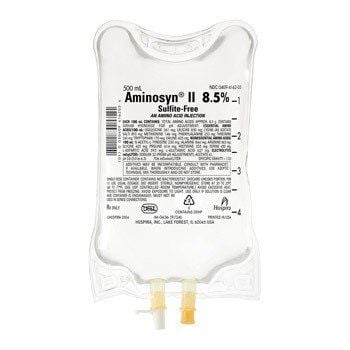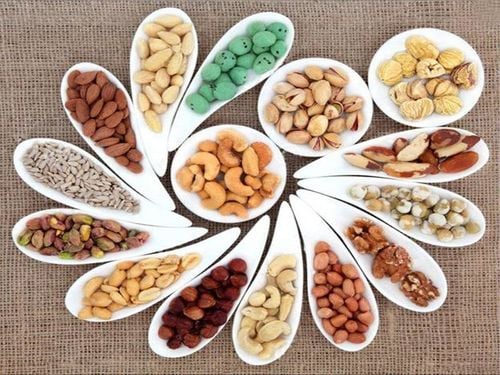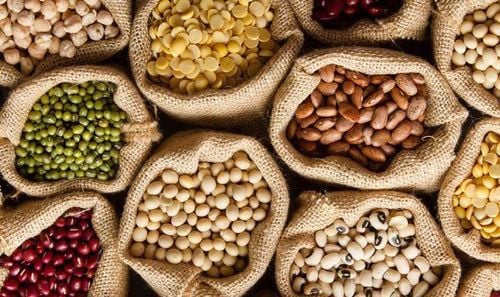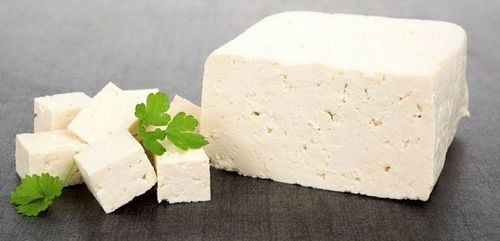This is an automatically translated article.
Nuts are a good source of fiber, healthy fats, and protein. They offer many health benefits such as supporting heart health, reducing cancer risk, and assisting in diabetes control. Furthermore, protein-rich nuts also provide good protein for a healthy diet. The following article will provide information for you to better understand protein-rich nuts for the diet.
1. Protein-rich nuts overview
Nuts are a great source of healthy fats, fiber and other beneficial nutrients. Each type of nut offers different nutritional benefits.
Nuts are also one of the best sources of plant-based protein. According to a 2017 review study, a diet rich in nuts may help prevent risk factors for serious medical conditions in the body, such as inflammation, cardiovascular disease, In this article, we recommend the healthiest nuts to eat based on their protein content and other nutritional benefits they provide. .
2. The Six Healthiest Protein-Rich Nuts
The following list ranks the six nuts in order of protein content and provides more information on their other nutritional benefits. Nutritional measurements for each variety on the list are for 100 grams (g) of raw seeds.
2.1. Peanut
Peanuts are generally more affordable than other nuts. Eating peanuts is a great way to increase the amount of plant-based protein in one's diet. Peanuts are widely available and provide several essential nutrients. Although peanuts are technically a legume, meaning they belong to a food group from a specific family of plants, most people consider them a nut.
Peanuts contain a wide range of polyphenols, antioxidants, flavonoids and amino acids. Research has shown that all these ingredients are beneficial to human health. According to the nutrient database provided by the United States Department of Agriculture (USDA), 100g of peanuts contains 567 calories and other nutrients as follows:
Protein: 25.80 g Fat: 49.24 g Carbohydrates : 16.13 g Fiber : 8.50 g Sugar: 4.72 g The fat in peanuts is mainly healthy monounsaturated and polyunsaturated fatty acids (PUFAs). There are also a lot of minerals in 100g of peanuts, including the following minerals:
Calcium: 92 milligrams (mg) Iron: 4.58 mg Magnesium: 168 mg Phosphorus: 376 mg Potassium: 705 mg Beans Peanuts also offer a recognizable benefit that is more affordable than many other nuts.
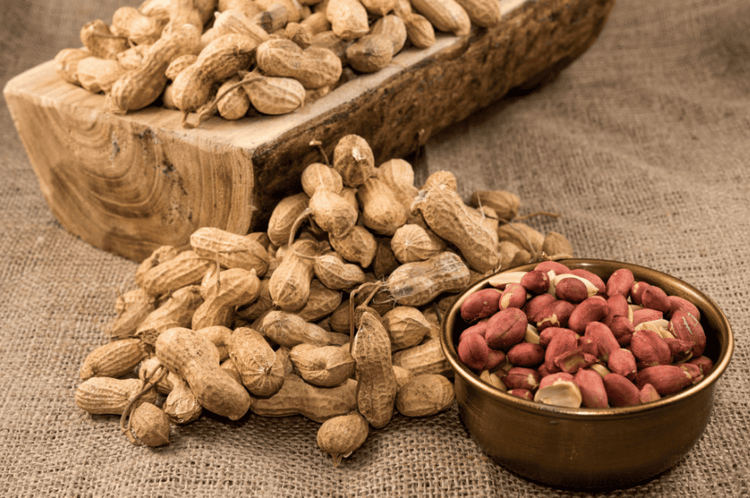
Đậu phộng thực chất là một loại đậu, nhưng mọi người thường coi chúng là một loại hạt.
2.2. Almond
Almonds have become increasingly popular in recent years and they are now available in many places. Almonds contain slightly less protein than peanuts, but they make up for it with many other important nutrients. Almonds can be the perfect snack for those looking for a healthy, high-protein alternative to other foods like chips or cookies. According to the United States Department of Agriculture (USDA), each 100g of almonds contains 579 calories and has the following nutritional composition:
Protein: 21.15 g Fat: 49.93 g Carbohydrate: 21.55 g Fiber: 12 .50 g Sugar: 4.35 g Most of the fat in almonds is monounsaturated fat. Almonds are also rich in vitamins and minerals, such as:
Calcium: 269 mg Iron: 3.71 mg Magnesium: 270 mg Phosphorus: 481 mg Potassium: 733 mg Vitamin E: 25.63 mg
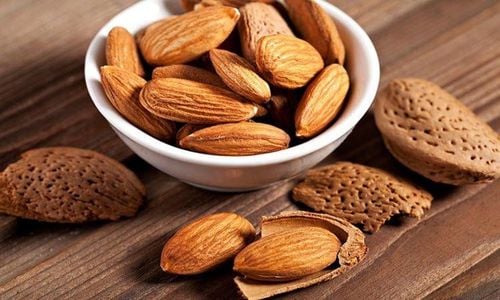
Hạnh nhân có thể là món ăn nhẹ hoàn hảo cho những người đang tìm kiếm một sự thay thế lành mạnh.
2.3. Pistachios
Pistachios are packed with protein and other important nutrients. They are also a good source of healthy fatty acids and antioxidants. A study published in the journal Nutrition Today noted that eating pistachios helps maintain healthy blood pressure and endothelial function, which may reduce the risk of health problems. cardiovascular health. According to the United States Department of Agriculture database, every 100g of pistachios contains 560 calories and the following nutrients:
Protein: 20.16 g Fat: 45.32 g Carbohydrate: 27.17 g Fiber : 10.60 g Sugar: 7.66 g Most of the fat content in pistachios is monounsaturated and polyunsaturated fats. However, pistachios provide less minerals than some other nuts, they contain 1,025 mg of potassium per 100g, which is also the most significant mineral content in the composition of pistachios. Other notable vitamins and minerals in pistachios include:
Calcium: 105 mg Iron: 3.92 mg Magnesium: 121 mg Phosphorus: 490 mg
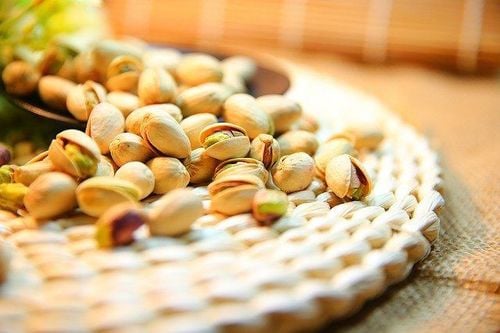
Ăn hạt dẻ cười có tác dụng duy trì chỉ số huyết áp và chức năng nội mô ở mức ổn định.
2.4. Cashew
Cashews are rich in monounsaturated fats. Cashews have a creamy texture that makes them a great addition to many dishes and snacks. According to a report by the United States Department of Agriculture, in 100g of cashews contains 553 calories and the following nutrients:
Protein: 18.22 g Fat: 43.85 g Carbohydrate: 30.19 g Fiber: 3, 30 g Sugar: 5.91 g Most of the fat in cashews is monounsaturated fat. Important vitamins and minerals in cashews include:
Calcium: 37 mg Iron: 6.68 mg Magnesium: 292 mg Phosphorus: 593 mg Potassium: 660 mg
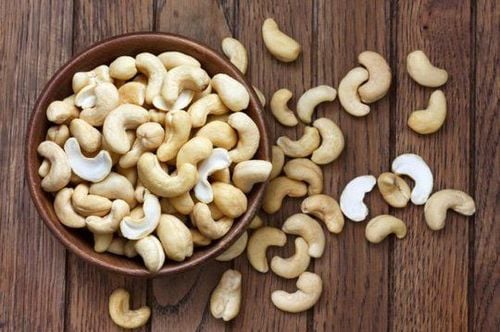
Hạt điều có kết cấu dạng kem làm cho chúng trở thành một sự bổ sung tuyệt vời cho nhiều món ăn và đồ ăn nhẹ.
2.5. Walnuts
Walnuts are higher in calories than some other nuts despite being lower in carbohydrates than many of them. The high calorie count is due to the very high fat content of walnuts. However, the fats in walnuts are mostly monounsaturated and polyunsaturated fats, which may offer a number of health benefits. They are also a good source of protein and other healthy nutrients. At 654 calories per 100g, the United States Department of Agriculture lists walnuts as:
Protein: 15.23 g Fat: 65.21 g Carbohydrate: 13.71 g Fiber: 6.7 g Sugar: 2 .61 g Walnuts have a slightly lower mineral content than other nuts:
Calcium: 98 mg Iron: 2.91 mg Magnesium: 158 mg Phosphorus: 346 mg Potassium: 441 mg published in the British Journal of Nutrition states that walnuts are also a rich source of flavonoids and phenolic acids.

Chất béo trong quả óc chó chủ yếu là chất béo không bão hòa đơn và chất béo không bão hòa đa.
2.6. Hazelnut
Hazelnuts have a distinctive flavor that makes them very popular in sweet treats. Hazelnuts contain less protein than other nuts, but in return, they provide many other health benefits. According to a study published in the Journal of Clinical Epidemiology, hazelnuts can help lower cholesterol. In the United States Department of Agriculture database, 100g of hazelnuts contains 628 calories as well as the following:
Protein: 14.95 g Fat: 60.75 g Carbohydrate: 16.70 g Fiber: 9, 7 g Sugar: 4.34 g This protein and fat content makes hazelnuts more similar to walnuts than other nuts. Most of the fats in hazelnuts are unrefined fats, but they are mainly composed of some polyunsaturated and saturated fats. Hazelnuts also contain the following minerals:
Calcium: 114 mg Iron: 4.70 mg Magnesium: 163 mg Phosphorus: 290 mg Potassium: 680 mg
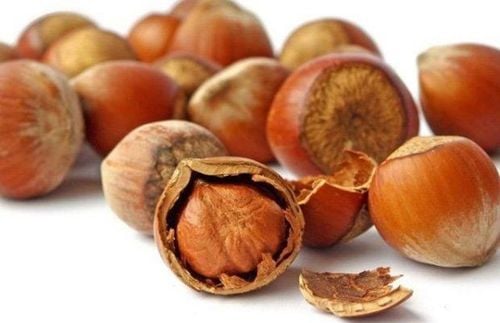
Theo nghiên cứu, hạt phỉ có thể giúp giảm cholesterol.
3. Should you eat more protein-rich nuts or not?
Eating nuts rich in protein is beneficial for health because they can protect the body from risk factors for cardiovascular disease and other health conditions. However, do not eat too many nuts.
Nuts are very high in calories, so eating large amounts of nuts during the day can cause a person to get more than they need. Doing so regularly can lead to weight gain. Nuts are also high in healthy fats, which are good in moderation but can cause diarrhea and other digestive problems.
Salted roasted nuts can add as much sodium to the diet as other salty snacks. Anyone eating salted nuts should pay attention to the label to see how much sodium they are eating. Raw or dry-roasted nuts are a healthier alternative.
Some people may find that eating nuts causes them to experience digestive problems, typically gas, bloating, indigestion. Nuts are also a common dietary allergy.
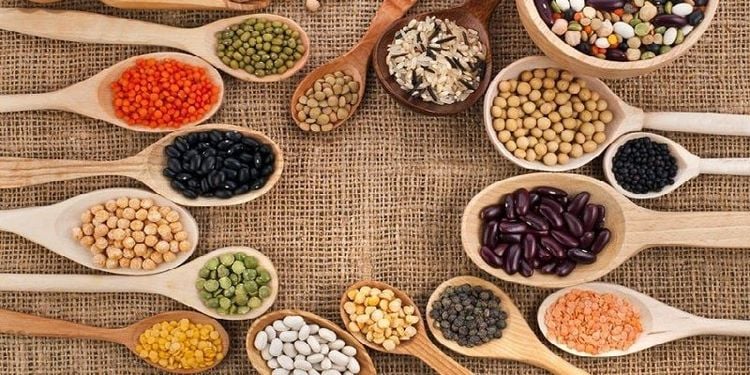
Ăn một lượng lớn các loại hạt trong ngày có thể khiến một người nhận được vượt quá mức năng lượng cần thiết.
4. How to Add Nuts to Your Diet
People can add nuts to their diet in a variety of ways to get more plant-based protein. Here are some examples of how to incorporate nuts into your diet.
4.1. Mix the nuts together
Mixing nuts together can make a healthy snack full of nutrients found in nuts. Salt-roasted nuts can add flavor and satiety to savory mixes, which can replace less healthy snacks, such as french fries. However, it is still best to keep a portion in moderation as they often have added salt and are quite high in calories.
Raw nuts are also a healthy and nutritious addition to a mix that includes dried fruit. Those following a low-carb or low-sugar diet should be aware that dried fruit can be high in sugar.
4.2. Use nuts as a snack
Nuts are usually ready to eat, which makes them the ideal snack at almost any time of the day. However, it's important to note that, although nuts contain healthy fats, they tend to be high in calories so they shouldn't be eaten in excess, especially for those who are overweight. weight, obesity.
4.3. Drink nut milk
Nut milk does not have the same properties as cow's milk, but it may retain some of the flavor and benefits of whole grains. Many grocery stores sell nut drinks, or you can make your own simple nut milks at home to avoid added ingredients. Examples include almond milk, cashew milk, and hazelnut milk.

Bạn có thể tự làm các loại sữa hạt đơn giản tại nhà để tránh các thành phần thêm vào.
4.4. Use nut butter
Along with peanut butter, many other types of nut butter are also available at markets and grocery stores. Housewives can add them to sandwiches or smoothies to create attractive flavors for the above dishes.
4.5. Sprinkle them on salads
Sprinkle some nuts on salads can increase the protein and nutrient content, and give the dish a special, enticing taste.
Protein-rich nuts are one of the healthiest snacks that should come to mind as they contain many essential nutrients, provided, of course, that they are not overly processed or loaded with additives. Many processed nut products, such as peanut butter, are often high in salt or sugar. Therefore, it is best to buy unprocessed whole grains. Incorporating nuts into a healthy diet with other naturally occurring foods can help reduce risk factors for many different chronic diseases.
Please dial HOTLINE for more information or register for an appointment HERE. Download MyVinmec app to make appointments faster and to manage your bookings easily.
References: medicalnewstoday.com, healthline.com, health.harvard.edu




